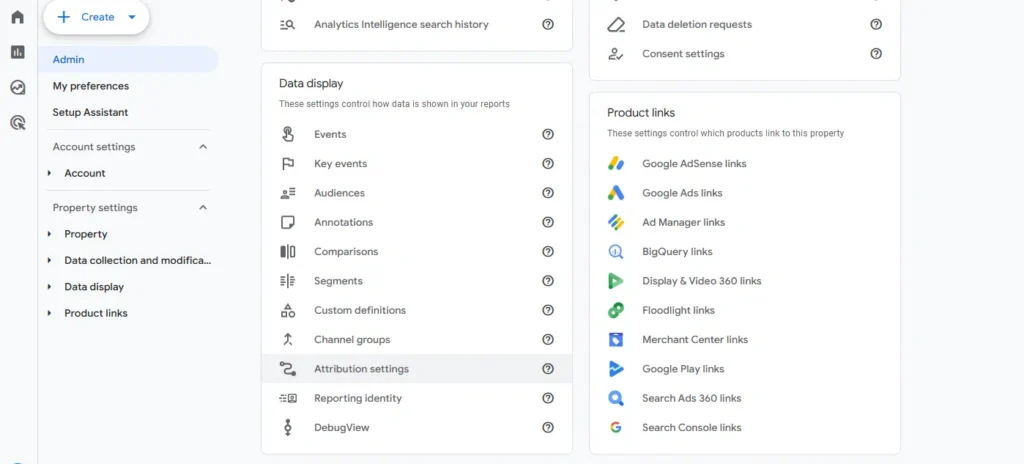Attribution models in Google Analytics 4 (GA4) don’t just reflect results — they influence them. The model you choose directly impacts your marketing strategy, budget allocation, and how return on investment (ROI) is perceived. In a landscape where data drives decisions, understanding GA4 attribution models is essential for marketers focused on growth and performance.
Why Attribution Matters in GA4
At its core, attribution answers a timeless marketing question: Which channels drive results? But in GA4, that answer isn’t always straightforward. The same dataset can tell very different stories depending on the attribution model applied. That makes model selection more than a technical detail — it’s a strategic decision.
Whether you’re focused on customer acquisition, optimizing media spend, or proving marketing effectiveness, knowing how attribution models work helps you avoid misinterpretation, reduce wasted spend, and double down on the touchpoints that actually convert.
What Is Attribution in GA4?
Attribution in GA4 is the method used to assign credit to various marketing channels that lead a user to convert — whether that’s completing a purchase, submitting a form, or triggering another key event.
But here’s where it gets complex: if a user first clicks a Google ad, then engages with a LinkedIn post, and finally converts via an email link, which channel deserves the credit? That answer changes depending on the attribution model you select.
GA4 uses different rules — and increasingly, machine learning — to assign credit to each step in the user journey. Some models focus on the last click, while others distribute credit across all touchpoints. This significantly affects how success is measured and where marketing budgets are spent.
Why Model Selection Matters
In GA4, key events are at the heart of attribution. Choosing an attribution model determines how conversions are credited — and ultimately, how your entire funnel is valued.
Think of attribution as both data science and interpretive art. GA4 offers more flexibility than Universal Analytics, but that also demands more thoughtful implementation from marketers.
The 3 Attribution Scopes in GA4
One of GA4’s biggest shifts is its use of three different attribution scopes, each offering a distinct view of performance:
1. User-Scoped Attribution (First User Source)
- Shows where the user first discovered your brand.
- Uses the last non-direct click model.
- Useful for understanding user acquisition trends over time.
2. Session-Scoped Attribution (Session Source)
- Focuses on the channel that brought a user to your site for a specific session.
- Also uses the last non-direct click model.
- Reflected in Traffic Acquisition reports.
3. Event-Scoped Attribution
- Applies to key conversions like purchases, signups, or downloads.
- This is the only scope where you can change the attribution model (e.g., data-driven, last click).
- Gives you deeper control over how GA4 analyzes conversion paths.
How to Change Your Attribution Model in GA4

To update the attribution model:
- Go to Admin > Data Display > Attribution Settings in your GA4 property.
- Choose the model you want GA4 to use for event-scoped reporting.
- Use the Model Comparison Tool under Advertising > Model Comparison to preview the impact of different models before making permanent changes.
Note: When you change your attribution model, GA4 applies it retroactively to historical data. This can result in noticeable changes in how conversions are reported.
What Attribution Can’t Tell You
While attribution models are powerful, it’s important to know their limits:
- They explain the “where,” not the “why.” GA4 won’t tell you if your messaging is off, your landing page is confusing, or your call to action isn’t compelling.
- Direct traffic is often discounted. GA4 attribution models ignore direct traffic unless it’s the only interaction, which can understate the impact of returning visitors.
- Some data is modeled. To fill in gaps from cross-device behavior or cookie opt-outs, GA4 uses statistical modeling — helpful but not always precise.
How Attribution Impacts Strategy and Spend
The attribution model you choose can change your entire marketing strategy.
- Last-click models undervalue upper-funnel efforts like video ads or social media, which often play a crucial role in influencing conversions but don’t get final credit.
- Data-driven models offer a more holistic view, crediting every touchpoint in proportion to its actual impact.
- You can also choose how conversion data is shared with Google Ads — either attributing across all channels or limiting it to Google touchpoints. This affects how bidding algorithms respond and can impact the performance of automated campaigns.
Key Takeaways for Marketers
If you’re not deep in GA4 every day, focus on these best practices:
- Default to data-driven attribution. It gives a more balanced view of the customer journey unless you have a strong reason to test other models.
- Use the Model Comparison Tool before switching models to see how results change without committing.
- Analyze full conversion paths, not just top-line metrics, to understand true performance.
- Combine attribution with qualitative insights. Don’t rely solely on numbers — consider user experience and feedback.
- Maintain clean data. Proper UTM tracking and consistent campaign tagging are essential for reliable attribution.
Final Thoughts
GA4 attribution isn’t just a technical setting — it’s a strategic tool. The model you choose defines how performance is measured, how teams are evaluated, and how marketing budgets are allocated. Use it wisely, and you’ll unlock deeper insights, greater efficiency, and smarter growth across your entire funnel.